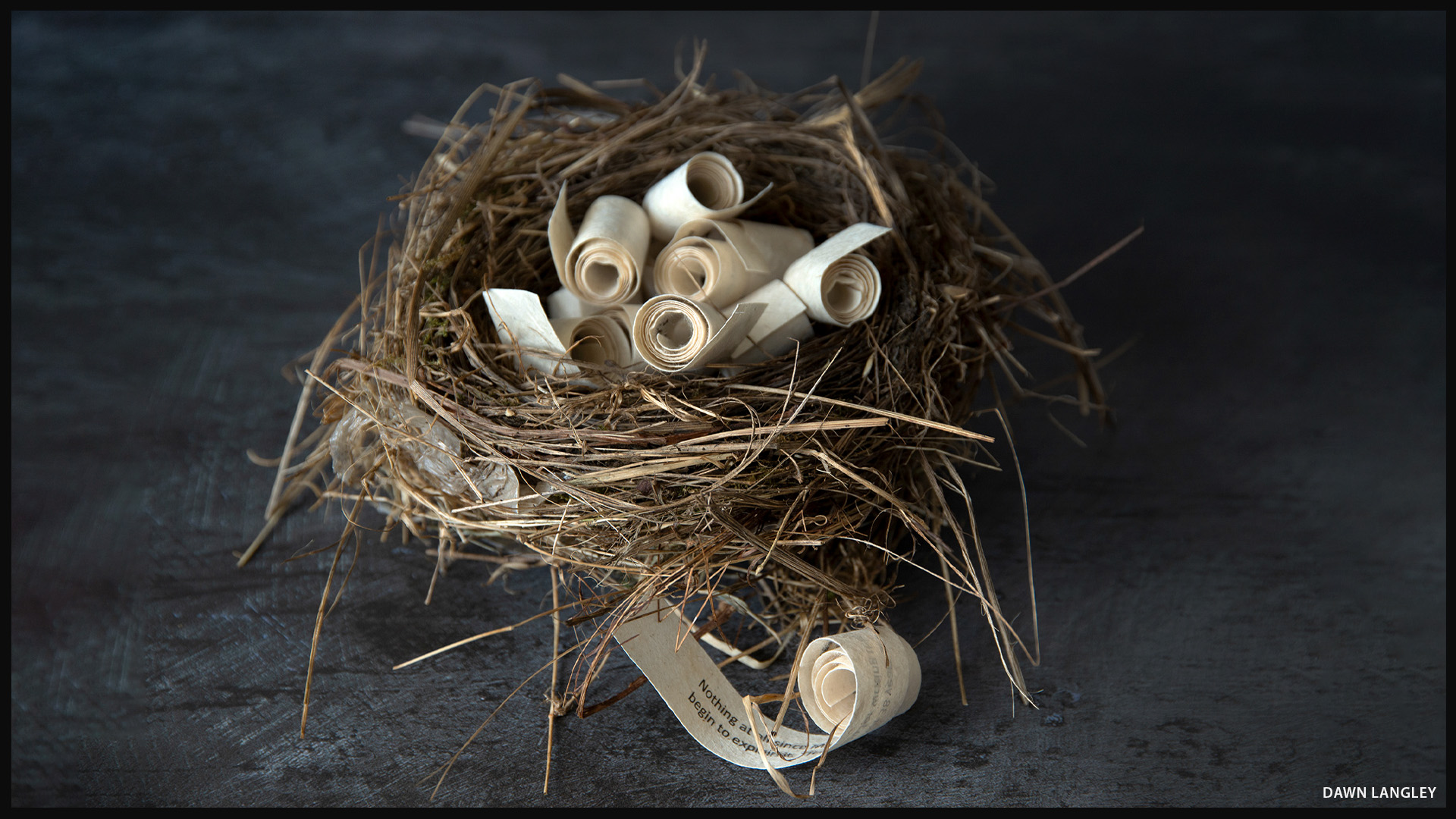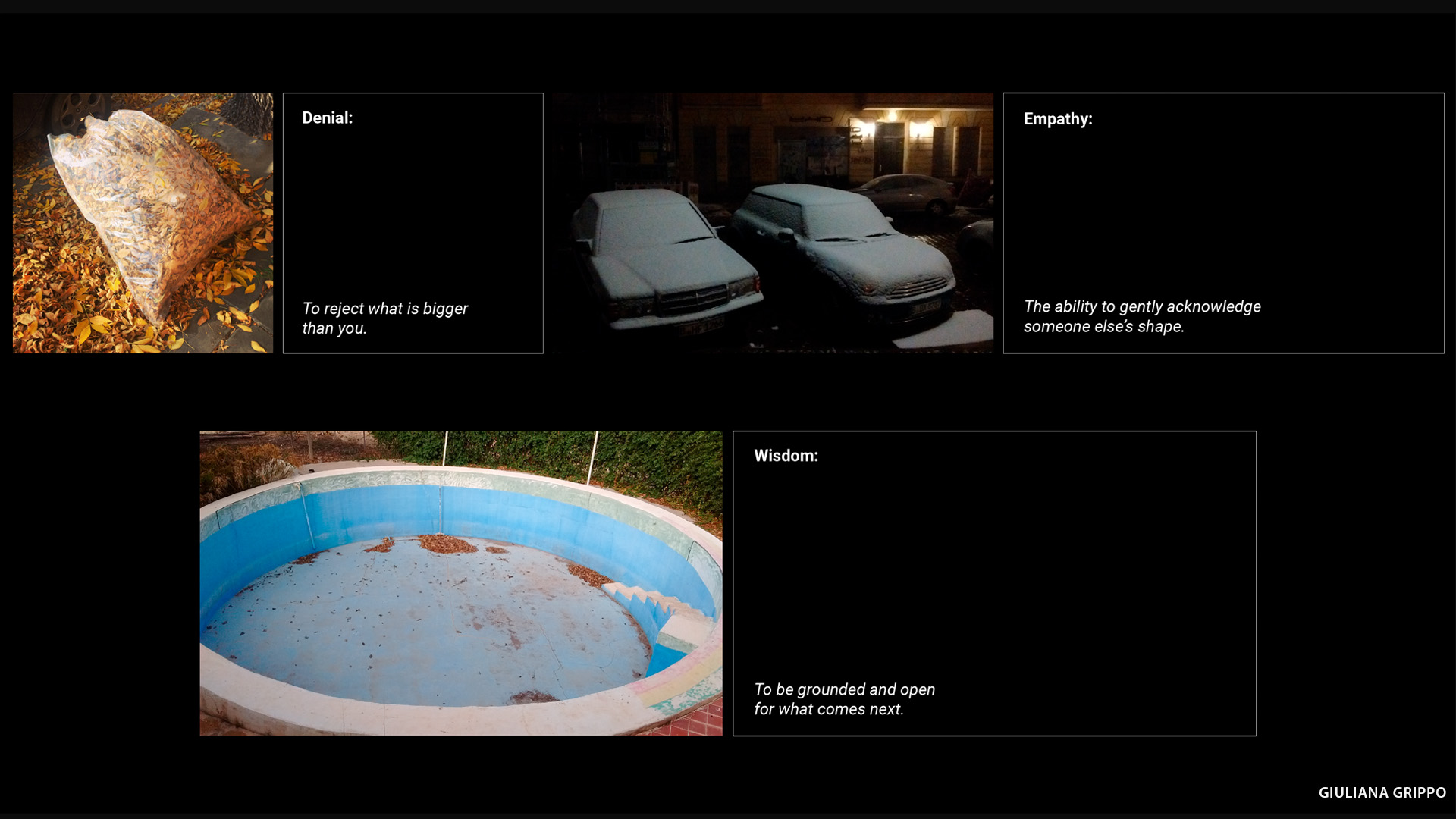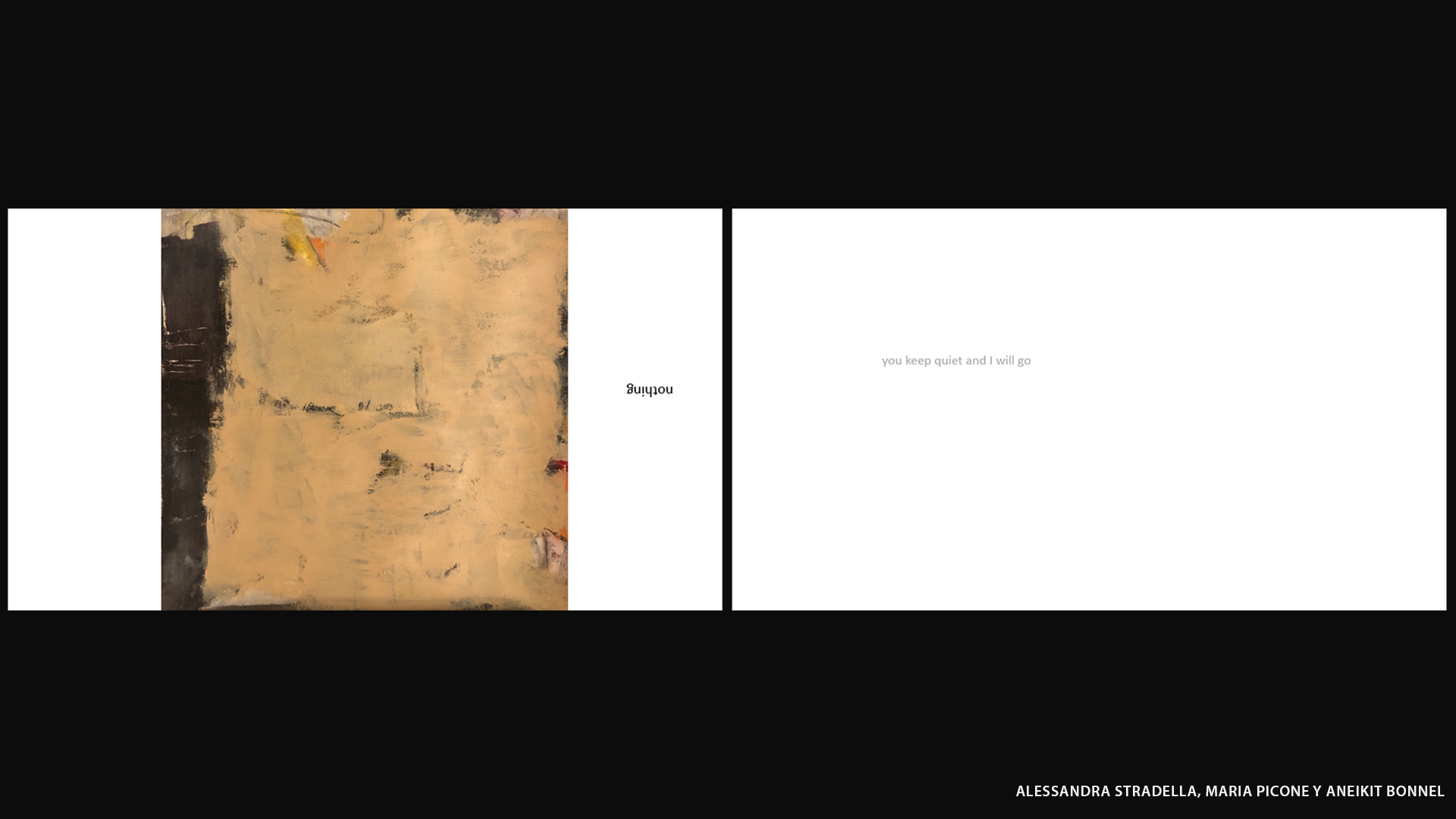Artists
United States of America
Caia Diepenbrock
Together Apart: #Shelter
19.08.20 09.09.20
Caia Diepenbrock is a multimedia artist originally from Rhode Island, USA. She has been living and working in Los Angeles, CA since graduating from Bard College in New York with a Bachelor’s degree in Studio Arts in 2015.
Her creative practice stems from her undergraduate thesis called Matrix of a Moment, which was an immersive installation focusing on the viewer’s experience of shadows and illusions created from uniquely manipulated mirrors and light. Having used a wide range of mediums and practices for this project, Caia has explored many forms of creative expression in both the art and design worlds since then.
Her experience ranges from designing sets for the film and music video industry, painting both murals and canvases, and designing and printing textiles by hand for her own clothing brand. Working in such a variety of mediums and spaces, the overarching theme in Caia’s work is creating immersive worlds that explore the human psychological experience of reality vs illusion and subjectivity vs. objectivity.
CAIA ABOUT TOGETHER APART: #SHELTER
During the ´ace program, I explored the idea of Shelter as it relates to me through feelings of familiarity, intimacy, privilege, and comfort. I began with a stream of consciousness writing exercise in which I simply wrote down all of the feelings, situations, objects, or environments that remind me of Shelter. With these thoughts in mind, I went on to use an approach I have been exploring for a few years now, which is translation through collage and painting.
Starting with fashion and design magazines, I intuitively pulled images that felt relevant to me and created several collages that circled around each theme of Shelter that I had written about. Selecting one that resonated most with me, I translated this collage into a painting that reflected on the feeling of bliss in being surrounded by nature and water.
This theme of water as shelter continued in the first round of group exercises, since we each found we had that in common. We each provided images of our work relating to this theme for each of us to reinterpret in our own ways. This collaborative process was refreshing to me, as I normally work independently – in this way, I was brought out of my own shelter by being pushed outside of my comfort zone.
The entire ´ace workshop became its own metaphor for shelter, providing a community of artists to relate to while pushing us to grapple with what might have started as an uncomfortable digital format. During a time that has forced us all to reinterpret what our daily, social and professional lives can look like among a global pandemic, it was both a hopeful and stimulating experience.
BIO
Caia Diepenbrock
1993 | Providence, Rhode Island USA
Lives in Los Angeles, CA
STUDIES
2015 | Bachelor’s of Studio Art | Bard College | Annandale on Hudson, NY – USA
2011 | Certificate in Photography | Rhode Island School of Design | Providence, RI
EXHIBITIONS
2018 | Perimeter Group Show – ARTShare LA
2016 | LEXICON Solo Artist in Residence Show | Lehrer Architects, Los Angeles CA
2016 | Translations Solo Show | M. Bird Studios, Culver City CA
2016 | Vision Prizm Part of 7th St. Annex Group Show | DTLA , CA
2014 | Mindscapes Solo Show | Island Heron Studios, Jamestown RI
RESIDENCIES
2016 | Lehrer Architects, Echo Park CA
AWARDS
2018 | Top Ten Artists of the Year, Circle Arts Foundation
2015 | Fund for Visual Learning Grant, Annandale on Hudson NY
2010 | Honorable Mention, Jamestown Art Center (RI)



Related Activities
Exhibitions, Together Apart
#1 | SHELTER: results
Artists in dialogue
16.12.20
During 2020, we carried out the first two sessions of Together Apart. The first session took as a conceptual and practical framework the REFUGE and the second, the NEST.
Through those starting points, both of which refer to caring atmospheres and structures for coexistence, we were able to think and create in a wide variety of directions and layers. We reflected on our pandemic context, a situation for which we had to find ourselves in the virtual non-space, but also a situation thanks to which people from many different countries were able to work simultaneously.
Assuming this complex situation, more than 20 participants per session created new pieces –some in exercise format–, took up projects that they had already worked on in the past or collectively set out to create new projects that will continue to develop beyond the scope of our meetings.
Taking these refuge and nest issues also in their complexity, we asked ourselves questions that made each of the participants involve their personal experiences, memory, memories and experiences from each of their territories. We addressed questions that sought to keep us in constant movement; at times we went through very optimistic or pessimistic visions about the possibility or necessity of having a shelter or a nest, and at other times, we were able to articulate more complex visions, enduring in intermediate and liminal states. For both, we took as a theoretical structure of support and dialogue the thought of Félix Guattari presented in The Three Ecologies (1989). His ethical-political approach that highlights the molecular domains of sensitivity, intelligence and desire, as well as his articulation of the three ecological registers (environment, social relations and human subjectivity), helped us to expand our creations and thoughts in relation to shelter and nest.
During the first session, when asked about the conditions that a refuge can have and the conditions that we would like a refuge to have, the artists (coincidentally and by chance, we had a cohort one hundred percent comprised of women) generated sculptural pieces, artists’ books, photographs, videos, dance pieces and more, reflecting on the permeability or isolation structures that a shelter can have. Also, many artists started from their bodily memories to refer to the refuge and made improvisation and performance pieces. We created in relation to the refuge conditions presented by nature and the refuges that we create to protect ourselves from certain natural conditions. Memory as a refuge and shelters for memory also arose through textile practices or from the use of jewelry or objects with which we build links. Finally, the bonds and the community as spaces that shelter and spaces that imply care was another of the axes that we explored through pieces that included readings of texts and sound activations.
Together Apart has functioned as a program that opened up possibilities for meeting and collaborative creation. It has made possible the creation of new rhythms and synchronies for a limited time but whose reverberations and echoes continue to affect in unexpected directions.
Daniela Ruiz Moreno (curator-in-residency)
Related artists
- Alessandra Stradella
- Ana Vivoda
- Aneikit Bonnel
- Anna Rose
- Ariana Pirela Sánchez
- Caia Diepenbrock
- Carla Freschi
- Christine Bruce
- Dawn Langley
- Dolores Delia
- Gina Kukulski
- Giuliana Grippo
- Janette Hopper
- Jannelle Roberts
- Jill AnnieMargaret
- Judith Elisabeth de Haan
- Male Correa
- Roseanne Lynch
- Sara Minsky
- Shereen Shalhoub



















